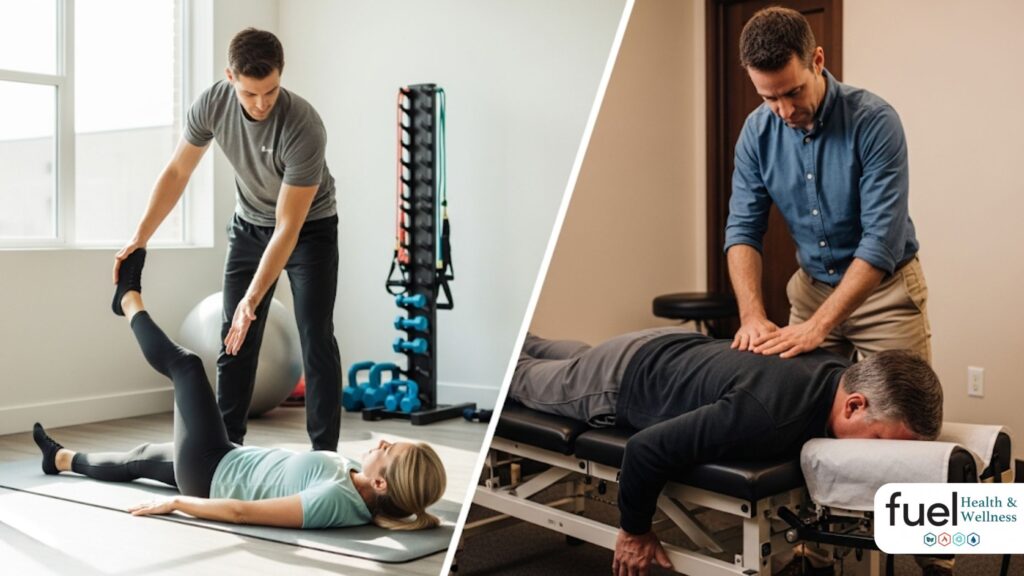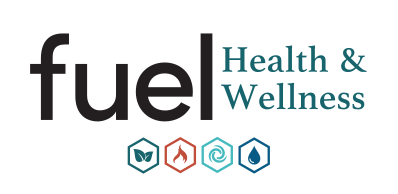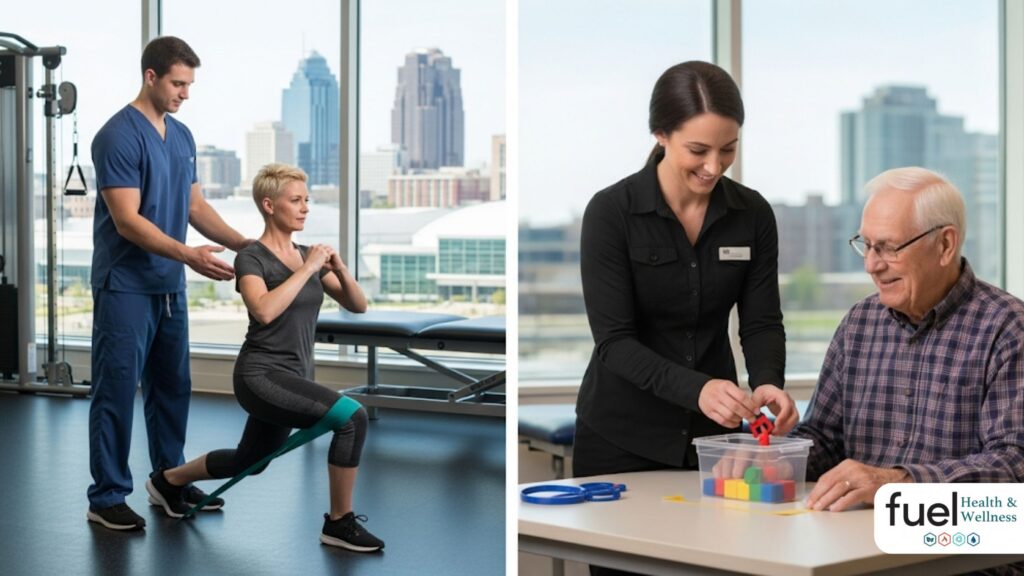Grand Rapids residents often face decisions about rehabilitation services as they work toward regaining independence and wellness. When choosing between Physical Therapy vs Occupational Therapy, it helps to understand each profession’s core focus, techniques, and outcomes. Patients may feel overwhelmed by terminology but can find clarity by examining treatment goals around mobility, strength, and daily living activities. This guide offers a comprehensive look at both therapies within the local context of Grand Rapids healthcare.
What is the difference between occupational therapy and physical therapy?
Physical Therapy vs Occupational Therapy helps clarify who addresses movement-related impairments and who focuses on task performance. Physical therapists evaluate muscle strength, joint flexibility, and functional movement patterns to restore mobility. Occupational therapists concentrate on fine motor skills, cognitive strategies, and adaptive equipment to support daily living activities. Both professionals share a patient-centered approach but diverge in goals, tools, and treatment frameworks.
Patients recovering from orthopedic injuries often follow a physical therapy plan that emphasizes strengthening and range-of-motion exercises. These interventions aim to reduce pain, prevent future injury, and optimize biomechanical efficiency. Individuals facing challenges with self-care tasks like dressing or meal preparation typically work with an occupational therapist. That professional uses adaptive strategies and sensory integration to bridge gaps in daily routines.
Understanding both roles is crucial for coordinating comprehensive care. Collaborative referral between therapists ensures that mobility training and functional independence progress in tandem. Patients may transition from one service to another as their rehabilitation goals evolve over time. Local clinics in Grand Rapids often employ multidisciplinary teams to streamline this continuum of care.
Physical Therapy vs Occupational Therapy: Key Clinical Differences

Physical Therapy vs Occupational Therapy distinctions revolve around target outcomes and therapeutic techniques. Physical therapy zeroes in on restoring fundamental movement through exercises, manual therapy, and modalities designed to enhance gross motor control. Occupational therapy hones in on a patient’s ability to engage in daily living activities by refining fine motor skills and problem-solving strategies. Recognizing these clinical differences helps patients select the most appropriate service for their unique health needs.
Key considerations include the patient’s primary limitations as well as the environments where they spend most time. A physical therapist might address gait abnormalities on a clinic treadmill, while an occupational therapist could simulate a kitchen environment to practice cooking tasks. Both disciplines often overlap, particularly when functional movement deficits impair self-care routines. Cross-disciplinary interventions can lead to faster, more durable improvements in overall independence.
Physical therapy interventions often employ equipment such as resistance bands, balance boards, and ultrasound devices. Therapists measure progress through quantitative metrics like range-of-motion gains, strength improvements, and pain reduction scales. Occupational therapy sessions might incorporate adaptive utensils, ergonomic workstation setups, or built-in cognitive challenges to restore task performance. These tailored approaches underscore each profession’s specialized expertise.
Outcome measures also differ by profession. Physical therapy progression is tracked using standardized functional movement assessments and mobility benchmarks. Occupational therapy success may be gauged by a patient’s ability to complete activities like buttoning a shirt or returning to work with minimal assistance. Together, these metrics create a holistic profile of rehabilitation progress.
When to See a Physical Therapist in Grand Rapids
Patients may seek physical therapy services when they experience mobility limitations that interfere with daily routines. Back pain from prolonged sitting, sports injuries, post-surgical stiffness, and balance disturbances are common triggers. Addressing these issues promptly can prevent chronic compensation patterns that lead to secondary injuries. Local clinics across the metro area tailor programs to each patient’s specific functional goals.
Rehabilitation centers in the city often highlight programs under the banner of Physical Therapy Grand Rapids to signal their regional focus and expertise. Therapists integrate evidence-based protocols to optimize strength, flexibility, and coordinated movement. Individualized treatment plans guide patients through structured exercise progression and pain management techniques. This localized approach ensures that residents benefit from practitioners who understand the community’s healthcare landscape.
Physical therapists leverage tools like gait analysis software and manual mobilization to pinpoint mobility deficits. They educate patients on posture correction, ergonomic adjustments, and home exercise regimens. Ongoing feedback loops between clinician and patient facilitate timely modifications to treatment intensity. This dynamic collaboration drives consistent functional improvements over the course of therapy.
Insurance coverage, referral processes, and session frequency can vary among providers. Some clinics partner with orthopedic surgeons for integrated care pathways, while others maintain independent practice models. Patients should verify credentials, facility amenities, and scheduling flexibility before committing. Transparent communication with administrative staff and therapists minimizes logistical hurdles along the rehabilitation journey.
When to Consult an Occupational Therapist
Consulting an occupational therapist is advisable when patients struggle with tasks that fill their daily schedules. Issues like difficulty dressing, challenges with utensil grip, or memory lapses during routine chores often signal the need for this service. Therapy sessions focus on enhancing fine motor skills and cognitive strategies tailored to individual roles and responsibilities. Adaptive tools and environmental modifications play a crucial role in restoring independence.
Occupational therapists systematically assess a patient’s home and work environments to identify barriers to daily living activities. They then recommend modifications such as grab bars in bathrooms, adjustable desks, or specialized writing implements. Interventions are designed to integrate seamlessly into a patient’s lifestyle, minimizing disruption. This personalized framework promotes sustained engagement and self-efficacy.
When neurological conditions or developmental delays impact performance, occupational therapy often becomes a cornerstone of the care plan. Therapists weave in exercises to build core stability, coordination, and sensory processing. This comprehensive approach can mitigate the effects of conditions like stroke, arthritis, or traumatic brain injury. Families and caregivers also receive training to support patients between sessions, reinforcing gains made in the clinic.
Successful occupational therapy outcomes often manifest as regained confidence and autonomy in routine tasks. Patients who once avoided cooking, dressing, or typing regain skills that enable fuller participation in work, school, or social activities. By enhancing functional independence, occupational therapy reduces caregiver burden and improves overall quality of life. The goal remains centered on enabling each patient to navigate personal and professional duties with minimal support.
Conditions Best Managed by Each Profession
Certain diagnoses align more closely with one therapeutic discipline than the other based on symptomatology and patient goals. Recognizing these alignments streamlines referrals and maximizes treatment efficacy. Both professionals collaborate to address multifaceted needs when conditions present overlapping challenges. Below is an overview of scenarios ideally suited to each specialty.
Typical Physical Therapy Candidates
Physical therapy is especially indicated for patients with acute injuries, post-operative rehabilitation, and chronic musculoskeletal conditions. Examples include knee replacement recovery, rotator cuff repair, and lower back pain syndromes. Therapists concentrate on enhancing flexibility, core stability, and athletic performance to restore mobility. Rehabilitation often incorporates balance drills, strength training, and manual soft tissue techniques.
Typical Occupational Therapy Candidates
Occupational therapy is the standard route for individuals encountering obstacles in performing self-care, work, or leisure pursuits. Cases may involve stroke survivors relearning how to dress or children with sensory processing disorders developing fine motor skills. The intervention toolkit includes task breakdown, adaptive devices, and cognitive rehearsal. Therapy goals revolve around optimizing task execution in real-world contexts.
Collaborative Cases
Complex patient profiles sometimes benefit from integrated physical and occupational therapy. A stroke survivor, for instance, may require gait re-education alongside assistance relearning kitchen tasks. Cancer rehabilitation programs might combine manual lymph drainage with strategies to manage fatigue during everyday activities. Such synergy leverages the strengths of both disciplines to foster a holistic recovery.
Comparing Physical Therapy to Other Rehabilitation Modalities

Physical therapy often intersects with chiropractic care, massage therapy, and dry needling. Understanding these distinctions informs patient choices and promotes collaborative care. Each modality offers unique benefits and may complement conventional therapeutic plans. Patients should discuss options with their primary rehabilitation provider to tailor a multi-faceted approach.
While chiropractic adjustments center on spinal alignment and joint manipulation, physical therapy emphasizes functional movement and muscle activation. Many patients design hybrid programs that incorporate both approaches for comprehensive musculoskeletal care. Although chiropractors and therapists use hands-on techniques, their philosophies differ in scope and treatment goals. Exploring Physical Therapy vs Chiropractic Care reveals opportunities for integrative treatment pathways.
Massage therapists focus on soft tissue mobilization to alleviate tension and improve circulation, offering immediate relief of muscular discomfort. Physical therapists may include similar manual methods but integrate them into active exercise routines aimed at long-term function. This blended strategy addresses both symptom relief and underlying biomechanical limitations. Comparing Physical Therapy vs Massage Therapy helps clarify when to use passive therapy versus active rehabilitation.
Dry needling targets myofascial trigger points with fine needles to interrupt pain cycles and restore muscle function. Physical therapy may incorporate dry needling as an adjunct, while occupational therapy seldom uses this modality. The addition of trigger point release can accelerate improvements in flexibility and pain thresholds. Evaluating Physical Therapy vs Dry Needling supports informed decisions about combining techniques for optimal outcomes.
Such rehabilitative modalities require credentialed practitioners and patient consent for invasive procedures. Insurance approvals may vary, so verifying coverage ahead of time reduces out-of-pocket surprises. Establishing clear communication channels with both therapists and alternative providers fosters cohesive treatment coordination. Ultimately, personalization remains the cornerstone of effective rehabilitation.
Advanced Techniques and Specialized Interventions
Innovations in rehabilitation continually expand the therapeutic toolkit available to physical and occupational therapists. Technological advances like virtual reality simulators can recreate functional environments for safe, controlled practice. Wearable sensors track joint angles and muscle activation in real time to refine treatment dosing. By integrating data analytics, therapists customize protocols for superior patient engagement.
Neuromuscular electrical stimulation (NMES) devices provide targeted muscle activation for patients with significant weakness or nerve injuries. Biofeedback tools likewise train patients to control muscle contractions more precisely. Combining these methods with traditional manual therapy can expedite recovery timelines. Therapists in Grand Rapids are increasingly adopting research-backed interventions to maximize return to function.
Telehealth platforms also extend the reach of rehabilitation services into patients’ homes. Virtual sessions guide individuals through exercise progressions while therapists monitor form via video. This approach is particularly valuable for those with transportation barriers or immune-compromised conditions. Blended in-person and remote care models offer flexibility without sacrificing clinical oversight.
Occupational therapy specialists may employ adaptive simulation tasks using digital interfaces to assess cognitive and motor performance. Augmented reality challenges patients to navigate virtual kitchens or workstations, building real-world proficiency. Such immersive training accelerates mastery of practical tasks like medication management or office-related workflows. The evolving landscape of specialized interventions underscores the commitment to patient-centered innovation.
Comparing PT and OT: A Table Overview
Below is a side-by-side summary of the primary attributes associated with physical therapy and occupational therapy in a standardized clinical context.
| Aspect | Physical Therapy | Occupational Therapy |
| Core Focus | Movement, strength, flexibility | Daily living activities, fine motor skills, cognition |
| Common Interventions | Therapeutic exercises, manual therapy, modalities | Task training, adaptive equipment, environmental mods |
| Typical Conditions | Sports injuries, post-surgical rehab, chronic pain | Sensory processing issues, stroke recovery, hand injuries |
| Outcome Measures | Range of motion, gait analysis, strength metrics | Activity completion rates, independence scales |
| Education Requirement | Doctorate in Physical Therapy (DPT) | Master’s or Doctorate in Occupational Therapy |
| Treatment Setting | Clinics, hospitals, sports facilities | Homes, schools, workplaces, specialized clinics |
The table encapsulates the distinct yet complementary nature of these disciplines. Patients can review primary focus areas to determine the initial point of consultation. Education pathways differ significantly, reflecting the specialized skill sets each profession cultivates. Understanding these structural elements supports informed decision-making at the outset of the rehabilitation process.
Choosing Between Physical Therapy vs Occupational Therapy in Grand Rapids
Deciding between these two professions relies on evaluating a patient’s functional limitations and lifestyle demands. Those needing strength restoration and joint mobility improvements typically start with physical therapy. Individuals aiming to restore independence in self-care tasks gravitate toward occupational therapy. Local availability, insurance considerations, and clinic ambiance also shape the final decision.
Patients should conduct initial consultations that include a comprehensive evaluation of movement patterns, daily living challenges, and long-term goals. Open dialogue about treatment preferences and constraints ensures alignment between patient expectations and clinical offerings. Grand Rapids clinics often provide multidisciplinary assessments to guide patients toward the most relevant therapy track. Collaborative case conferences can also aid in nuanced care coordination.
For personalized guidance on which therapy aligns best with one’s lifestyle and medical history, patients are encouraged to Contact us for a complimentary screening consultation. The process involves discussing pain patterns, activity limitations, and functional goals to craft a tailored treatment plan. Our team prioritizes clarity around expected outcomes, session frequency, and estimated recovery timelines. Transparent coordination ensures patients feel informed and empowered throughout their rehabilitation journey.
Frequently Asked Questions
What is the main distinction between physical therapy and occupational therapy?
Physical therapy concentrates on restoring functional movement and addressing pain through exercises, manual techniques, and mobility training. Occupational therapy focuses on enabling a patient’s ability to perform daily living activities by developing fine motor skills and adapting environments to support independence.
Which conditions are better suited for occupational therapy?
Conditions such as stroke-related impairments, arthritis affecting hand function, developmental delays in children, and cognitive challenges post-injury are typically managed by occupational therapists. These professionals tailor interventions to each patient’s unique roles and routines.
When should a patient choose physical therapy over occupational therapy?
Patients recovering from musculoskeletal injuries, joint replacements, or chronic back and neck pain usually benefit most from physical therapy. The discipline is designed to enhance strength, flexibility, and functional movement patterns through targeted exercise regimens.
Can patients receive both therapies simultaneously?
Yes, many patients experience faster and more comprehensive recovery when physical and occupational therapy are coordinated within a multidisciplinary framework. Collaborative care plans address both mobility and functional skill deficits in tandem.
How do I decide which therapy is covered by insurance?
Insurance coverage varies based on policy language and referral requirements. It is advisable to review plan documents or speak with an insurance representative, and verify benefits during the initial scheduling process to minimize unexpected costs.
Final Words
In summary, Physical Therapy vs Occupational Therapy choices reflect the patient’s distinct rehabilitation objectives. When mobility, strength, and pain relief take precedence, physical therapy offers evidence-based interventions to restore functional movement. Meanwhile, occupational therapy bridges the gap between impairment and independence in everyday tasks by enhancing fine motor skills and adaptive strategies. Ultimately, patients in Grand Rapids can achieve comprehensive recovery by selecting the service that aligns with their goals or integrating both through multidisciplinary care. For expert guidance and personalized treatment plans, trust Fuel Health & Wellness to deliver compassionate, results-driven rehabilitation solutions.


